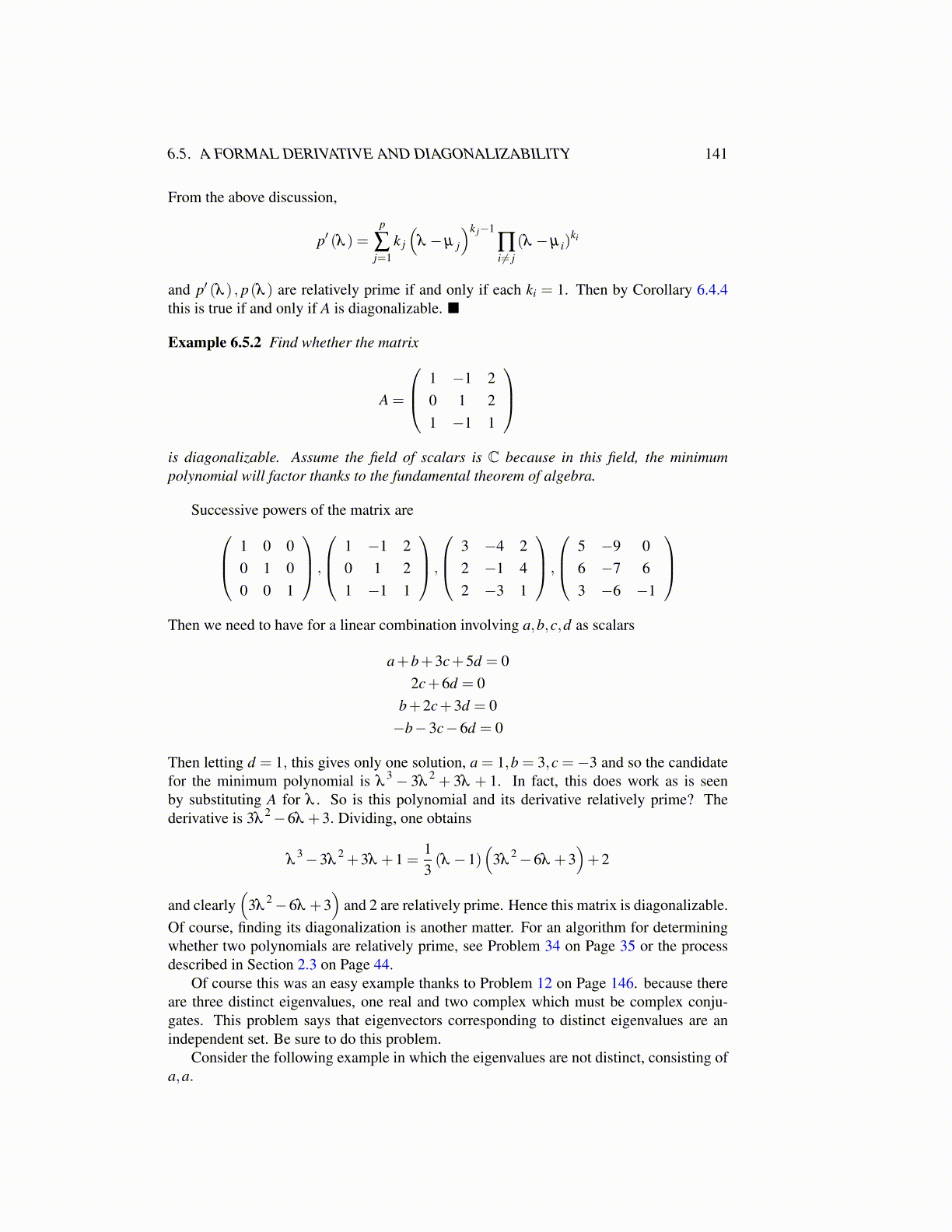
6.5. A FORMAL DERIVATIVE AND DIAGONALIZABILITY 141
From the above discussion,
p′ (λ ) =p
∑j=1
k j
(λ −µ j
)k j−1∏i̸= j
(λ −µ i)ki
and p′ (λ ) , p(λ ) are relatively prime if and only if each ki = 1. Then by Corollary 6.4.4this is true if and only if A is diagonalizable. ■
Example 6.5.2 Find whether the matrix
A =
1 −1 20 1 21 −1 1
is diagonalizable. Assume the field of scalars is C because in this field, the minimumpolynomial will factor thanks to the fundamental theorem of algebra.
Successive powers of the matrix are 1 0 00 1 00 0 1
,
1 −1 20 1 21 −1 1
,
3 −4 22 −1 42 −3 1
,
5 −9 06 −7 63 −6 −1
Then we need to have for a linear combination involving a,b,c,d as scalars
a+b+3c+5d = 02c+6d = 0
b+2c+3d = 0−b−3c−6d = 0
Then letting d = 1, this gives only one solution, a = 1,b = 3,c =−3 and so the candidatefor the minimum polynomial is λ
3 − 3λ2 + 3λ + 1. In fact, this does work as is seen
by substituting A for λ . So is this polynomial and its derivative relatively prime? Thederivative is 3λ
2−6λ +3. Dividing, one obtains
λ3−3λ
2 +3λ +1 =13(λ −1)
(3λ
2−6λ +3)+2
and clearly(
3λ2−6λ +3
)and 2 are relatively prime. Hence this matrix is diagonalizable.
Of course, finding its diagonalization is another matter. For an algorithm for determiningwhether two polynomials are relatively prime, see Problem 34 on Page 35 or the processdescribed in Section 2.3 on Page 44.
Of course this was an easy example thanks to Problem 12 on Page 146. because thereare three distinct eigenvalues, one real and two complex which must be complex conju-gates. This problem says that eigenvectors corresponding to distinct eigenvalues are anindependent set. Be sure to do this problem.
Consider the following example in which the eigenvalues are not distinct, consisting ofa,a.